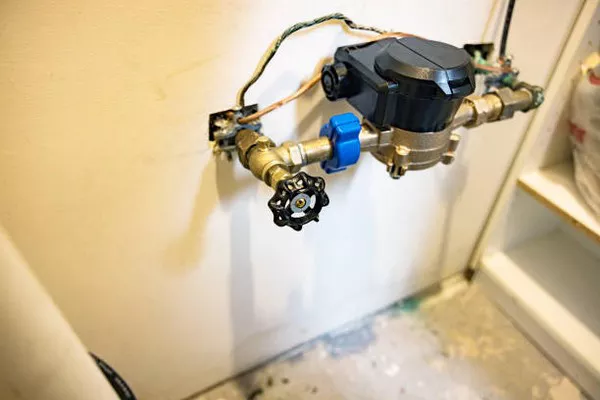In the realm of instrumentation, signal conditioning plays a crucial role in ensuring accurate and reliable measurements. As instruments become more sophisticated and diverse, the need for precise data acquisition and processing becomes paramount. Signal conditioning, often referred to as the “front-end” of measurement systems, involves the manipulation of raw signals to optimize them for subsequent processing, ultimately enhancing the accuracy and reliability of the measured data.
Defining Signal Conditioning:
Signal conditioning encompasses a range of techniques and processes applied to raw signals before they are sent to the data acquisition system. These signals, originating from sensors or transducers, are often weak, noisy, or incompatible with the input requirements of the data acquisition system. Signal conditioning addresses these challenges by modifying the signals to meet the system’s specifications.
Purpose of Signal Conditioning:
Amplification: One primary objective of signal conditioning is to amplify weak signals. Sensors often produce low-level signals that may be susceptible to noise and interference. Amplification boosts these signals to a level that is more easily detectable and less prone to distortion during transmission.
Filtering: Noise can significantly impact the accuracy of measurements. Signal conditioning involves filtering out unwanted noise, either through hardware-based analog filters or digital filtering techniques. This ensures that the data received by the instrumentation system is a faithful representation of the actual physical phenomenon being measured.
Isolation: In many measurement scenarios, it is essential to isolate the measurement circuit from the external environment. Signal conditioning incorporates isolation techniques to prevent ground loops and interference, thus safeguarding the integrity of the measured signals.
Compatibility: Sensors and transducers generate signals with varying characteristics. Signal conditioning adjusts these signals to match the input requirements of the data acquisition system. This involves modifying voltage levels, current, or impedance to ensure seamless integration and accurate data transfer.
Components of Signal Conditioning:
Amplifiers: Amplifiers are fundamental components in signal conditioning. They increase the amplitude of the signal, making it more discernible against background noise. Operational amplifiers (op-amps) are commonly employed for their versatility and precision in amplifying signals.
Filters: Filters are utilized to eliminate unwanted frequencies and noise from the signal. Low-pass, high-pass, band-pass, and notch filters are deployed based on the specific requirements of the measurement system. Advanced digital signal processing (DSP) techniques are increasingly employed for precise filtering.
Isolation Devices: To prevent interference and ground loops, isolation devices such as transformers and optocouplers are employed. These devices ensure that the measured signals are electrically isolated from the rest of the system, enhancing both safety and accuracy.
Converters: Analog-to-digital converters (ADCs) and digital-to-analog converters (DACs) play a vital role in signal conditioning. ADCs convert analog signals into digital format for processing, while DACs convert digital signals back into analog for output. These converters enable compatibility between different stages of the measurement system.
Applications of Signal Conditioning:
Industrial Automation: In industrial settings, signal conditioning is essential for monitoring and controlling various processes. Sensors embedded in machines generate signals that need conditioning to ensure accurate feedback for process control systems.
Medical Instrumentation: Signal conditioning is critical in medical instruments like electrocardiograms (ECGs) and blood pressure monitors. Weak physiological signals must be amplified and filtered to obtain reliable data for diagnosis and monitoring.
Aerospace and Defense: In aerospace and defense applications, where precision is paramount, signal conditioning is crucial for accurate navigation, communication, and surveillance systems. Harsh environmental conditions further highlight the importance of robust signal conditioning techniques.
Environmental Monitoring: Instruments used for environmental monitoring, such as weather stations and pollution sensors, rely on signal conditioning to enhance the accuracy of measurements. Filtering out interference from the surroundings ensures that the data reflects true environmental conditions.
Challenges and Advances in Signal Conditioning:
Miniaturization: As technology advances, there is a growing demand for smaller, more compact instrumentation. Signal conditioning circuits must adapt to these constraints without compromising performance, leading to the development of miniaturized and integrated signal conditioning solutions.
Digital Signal Processing: The advent of powerful digital signal processing techniques has revolutionized signal conditioning. Digital filters and processing algorithms offer unprecedented flexibility and precision in manipulating signals, opening the door to more sophisticated and adaptive conditioning strategies.
Power Efficiency: Power consumption is a critical consideration, especially in portable and battery-operated instruments. Signal conditioning circuits are continually evolving to be more energy-efficient, enabling prolonged operation without frequent battery replacements.
Wireless Signal Conditioning: With the rise of wireless communication, there is a growing trend toward integrating signal conditioning with wireless transmission capabilities. This eliminates the need for physical connections, reducing complexity and allowing for more flexible instrumentation setups.
Conclusion:
Signal conditioning is the linchpin of accurate and reliable measurements in modern instrumentation. Its role in amplifying, filtering, and adapting signals ensures that the data acquired by measurement systems accurately represents the physical phenomena under observation. As technology continues to evolve, signal conditioning will remain a focal point in the pursuit of precision and reliability in the diverse fields of science, industry, and beyond. Understanding the principles and applications of signal conditioning is essential for engineers and scientists working on the forefront of measurement technology.

